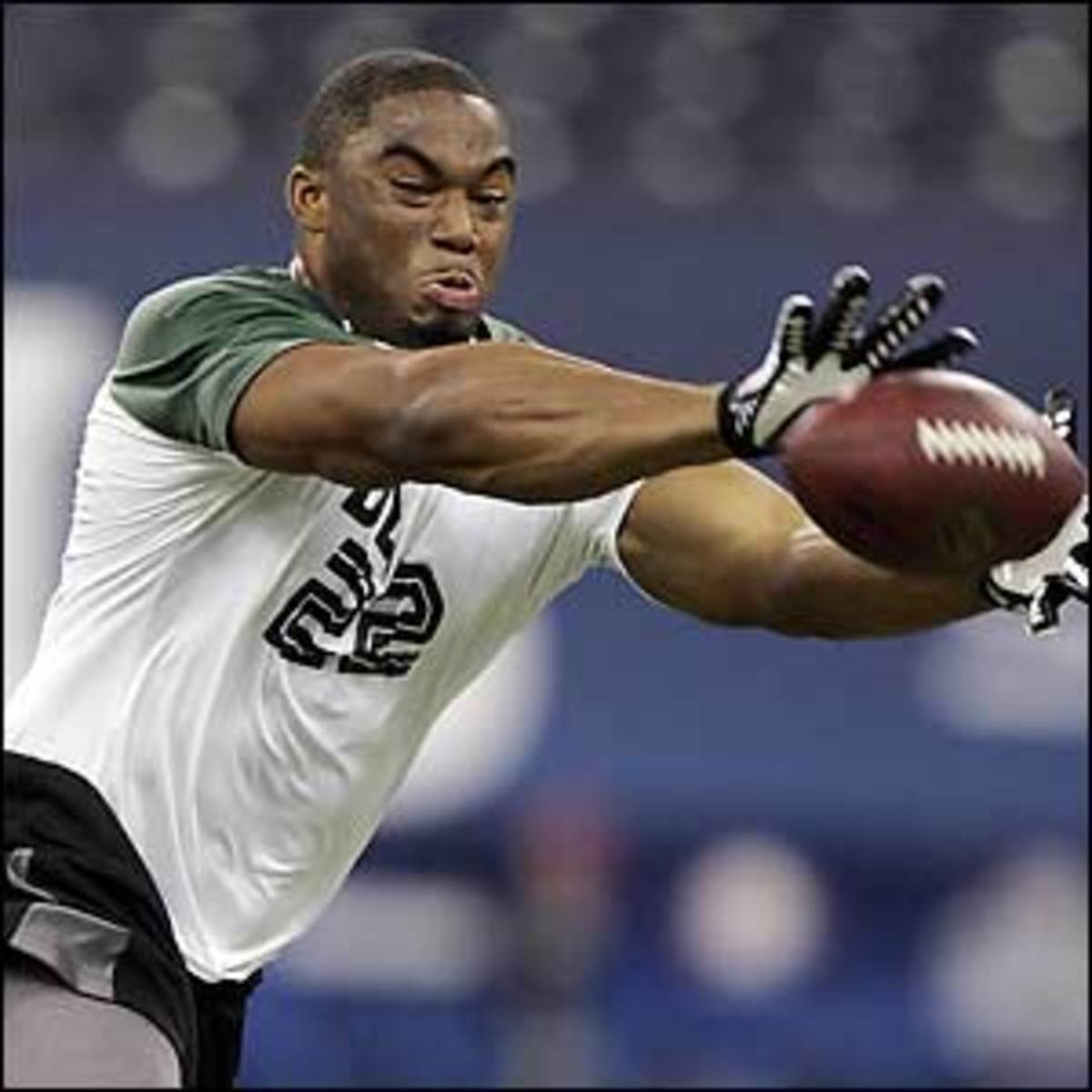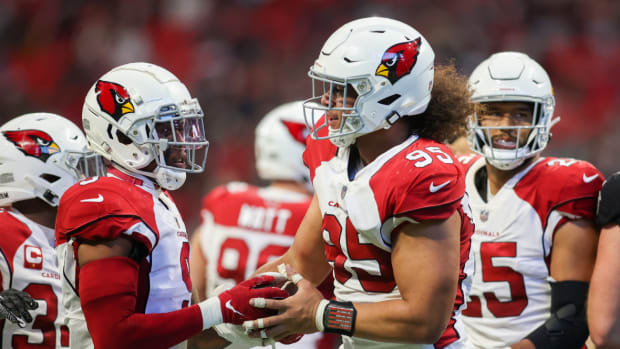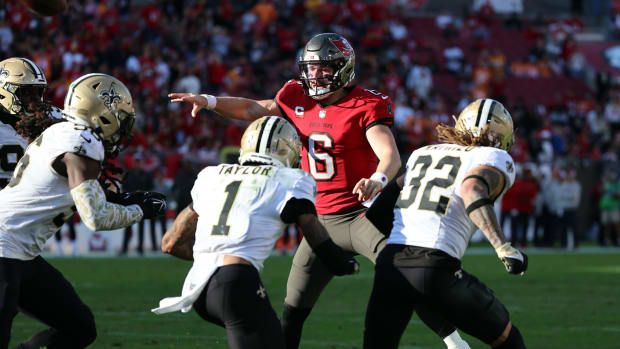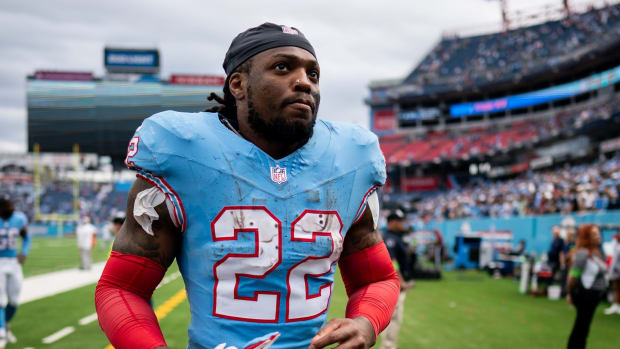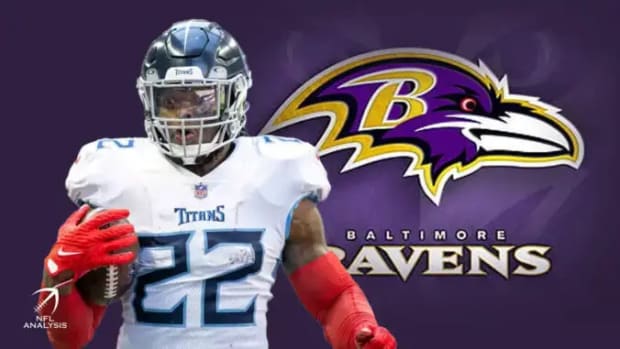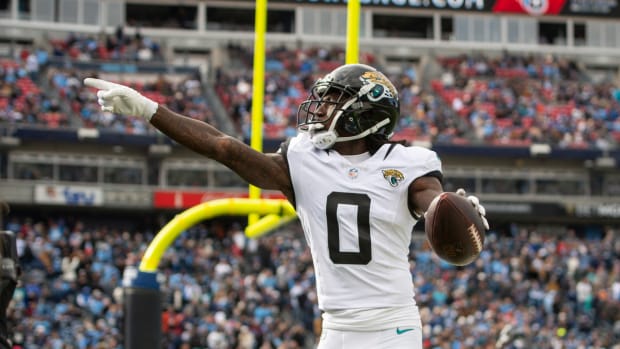Analyze this
Vernon Gholston, DE/OLB, Ohio State: His performance at the combine could be one for the ages. He ran faster than many of the defensive backs, was stronger than most of the offensive linemen and looked as athletic as anyone presently on the roster of the Indiana Pacers. Gholston came to Indianapolis as a fringe top 10 player but left as a possible top-six pick.
Dominique Rodgers-Cromartie, CB, Tennessee State: He built a buzz around himself after a terrific performance at the Senior Bowl. He now is trumpeting his arrival among the top 40 selections, and could end up in Round 1 after a phenomenal showing at the combine, the most complete of any defensive back.
Devin Thomas, WR, Mich. St.: He's being looked upon as a receiver with rare size and coveted speed after his combine performance. His 40 times of 4.4 seconds were only surpassed by his pass-catching workout, which was outstanding. The Spartan junior could possibly sneak into the late part of Round 1, something no one predicted two months ago.
Jeremy Zuttah, G, Rutgers: Zuttah shocked NFL decision makers with his speed and strength. The Scarlet Knights starting tackle three years running, he now heads into the draft as one of the top three rated guards.
Darren McFadden, RB, Arkansas: Although most of the teams at the top of the draft don't need a running back, McFadden gave them a lot to think about. He is undoubtedly the top player in April's draft and proved as much at the combine. He's drawing comparisons to Adrian Peterson, the seventh pick of last year's draft who went on to earn Rookie of the Year honors.
Carl Nicks, OT, Nebraska: Nicks is a rare athlete for his size. His ability to move his 343-pound frame around the floor of the RCA Dome had scouts drooling. Nicks improved 20 slots in the draft after his combine showing.
Jonathan Stewart, RB, Oregon: Stewart's 40 times in the low 4.4 second area and 28 reps on the bench press elevated his status. Teams in the top third of Round 1 may take Stewart even if running back is not a critical need, based on the value he brings.
Rashard Mendenhall, RB, Illinois: Mendenhall adds to an already crowded field of exceptional ball carriers who improved their draft stock at the combine. He will fight a close battle with Stewart to be the second running back drafted.
Andre Caldwell, WR, Florida: Caldwell, already considered a polished receiver, exceeded expectations with a 40 times under 4.4 seconds. He missed the middle part of his senior season with an injury, yet his combine performance will help Caldwell regain some of the ground his draft ranking lost.
Dustin Keller, TE, Purdue: Keller was always considered a pass catcher first and foremost in college. His 40 times in the 4.5s now classify him as a downfield threat at tight end. Keller passed the strength test at the combine, completing 26 reps on the bench. He now has a glimmer of hope as a blocker, a skill he rarely displayed at Purdue.
Calais Campbell, DE, Miami-Fla.: Scouts were surprised Campbell entered the draft after a poor junior campaign. He began the season as a potential top-10 pick, left college as a middle first-round choice and left the combine struggling to stay in the top 25 selections.
Mario Manningham, WR, Michigan: His greatest asset in college was his ability to stretch the field. Forty times in the 4.6 area at the combine means times will be rare when he outruns cornerbacks in the NFL. Manningham's draft stock lost almost a full round.
Mike Hart, RB, Michigan: Hart was a complete player in college and has a place in the NFL. But 40 times which averaged 4.7 seconds, after he weighed in at 206 pounds, means his place in the draft is no better than the middle rounds.
Brandon Flowers, CB, Virginia Tech: He was one of the biggest disappointments at the combine. He was considered a top 20 pick and the No. 1 cornerback in the draft by a number of teams. His 40 times in the 4.5 second area, coupled with a marginal practice session, could leave him out of Round 1.
Marcus Howard, DE/OLB, Georgia: Forty times of 4.4 seconds are marks usually reserved for receivers, running backs or defensive backs. Howard, a 237-pound defensive lineman in college, did it with ease at the combine.
Craig Stevens, TE, California: Stevens is considered one of the better blocking tight ends in the draft but a minimal receiving threat. His 40 time of 4.65 seconds and outstanding pass catching workout now have many rethinking that opinion.
Jason Jones, DL, Eastern Michigan: He's getting consideration as a 3-4 defensive end. He measured 6-foot-5 inches, 273 pounds and has 36-inch long arms, which makes him a good fit. He also ran surprisingly fast, clocking his 40s in the 4.7 second area.
Bryan Kehl, OLB, BYU: His 40 time (4.65) was faster than most scouts expected.
The Miami Hurricanes football program has fallen on tough times recently and one needs to look no further than the NFL combine to see why. Since 2001, the program consistently had multiple players selected in Round 1, with a record six being chosen during the initial frame in '04. It was not unusual for the team to have as many as 10 players chosen throughout the seven rounds of the draft in the past. This year just six players from the program were invited to the combine, and the two headliners, defensive end Calais Campbell and safety Kenny Philips, were huge disappointments.
































